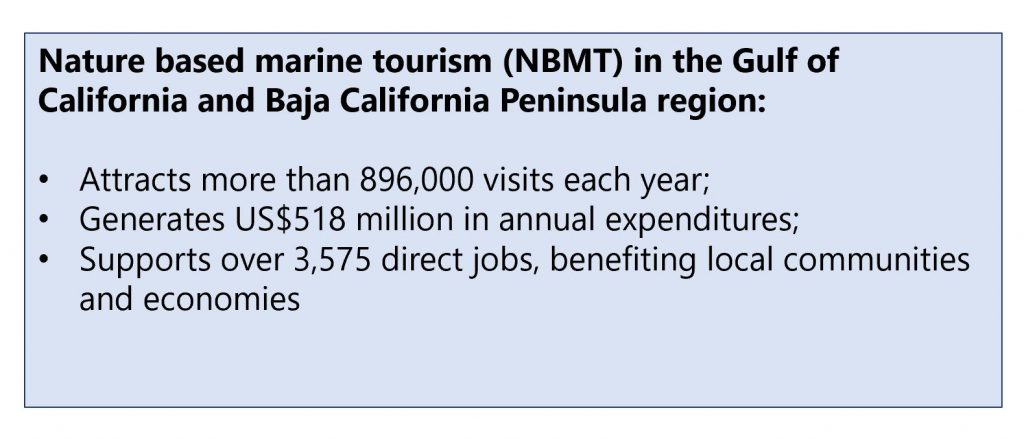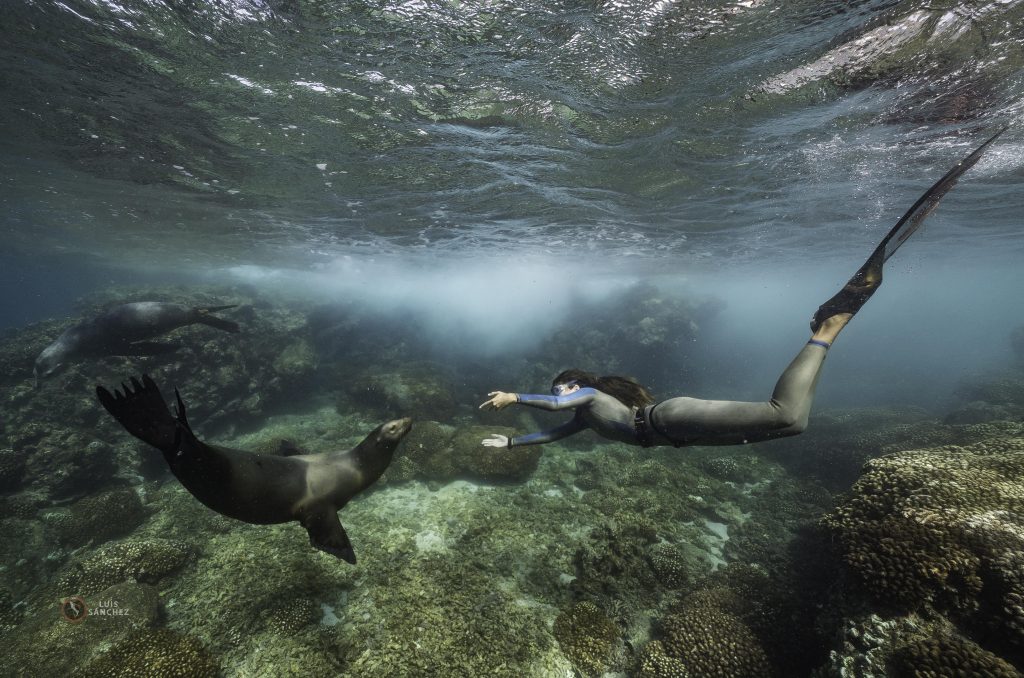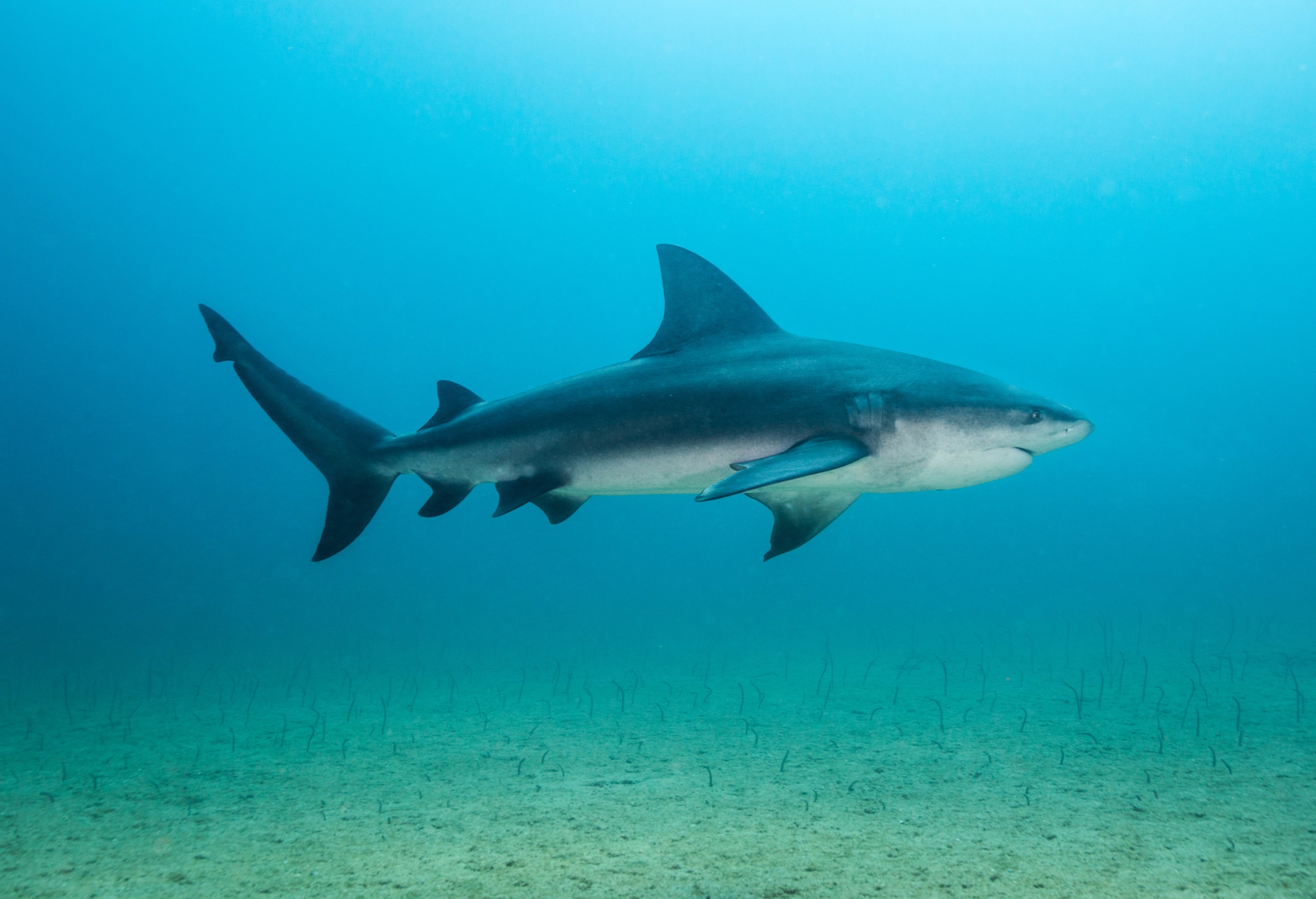Nature-based tourism makes the case for long-term conservation strategies in the Gulf of California
“There’s something extremely humbling about diving – especially if you’re surrounded by bull sharks! I remember feeling adrenaline, exhilaration, and bliss all at once; it’s definitely a feeling I’ll always want to re-live” Ana Pozas remembers her first time diving in the world famous Cabo Pulmo marine reserve.

Each year, people travel from all over the world to visit the Gulf of California, or the world’s aquarium, as Jacques Costeau once famously dubbed it. Sea lions, whale sharks, whales, big game fish make up the 40 key species groups that bring people to the region looking for an opportunity to interact with marine wildlife – from up-close encounters with grey whales, to witnessing the unmistakable grace and curiosity of a bull shark, to dancing with a sea lion to tracking a wahoo in a catch and release game – the Gulf of California provides an unparalleled variety of options to experience life-changing moments.
Unlike mass tourism, nature tourism depends on the preservation of healthy ecosystems, wild populations, and the local economies and communities that depend on them. Although mass tourism represents a higher GDP than nature tourism in the country, there are some states like Baja California Sur where the latter accounts for almost 50% of overall tourist expenditures. This highlights its potential as a key economic driver, and therefore the importance and urgency to develop and implement the necessary policies and frameworks that will ensure not only a sustainable expansion of the NBMT industry in the future, but will also protect it from outside threats such as coastal development, pollution, and negative consequences of poor fishing practices. By recognizing the substantial wealth generated by a healthy ecosystem, we can make the case to implement strategies that promote thriving local communities that engage as active stewards of their natural surroundings thus benefiting greatly both people and the planet.

“Sea lions are playful like puppies, swimming in circles around you, jumping out of the surface with joyful expressions, sometimes it’s like an elegant underwater dance, I can say that I like this spectacle even more than ballet” shares Estrella Navarro H., freediving champion and coauthor of the paper. This study reveals that sea lions were the most frequently referenced by tour operators as the most important animal for their business.
What are the main challenges for NBMT operators?
In the referenced paper, tour operators agreed that the main challenges for NBMT include pollution and declines in ecosystem health, a lack of infrastructure, poor resource management policies, and high operating costs. This draws attention to the importance of having the correct governance structures and policies in place to improve marine resource management and to ensure well planned and sustainable coastal development. This also underscores the value of ensuring that we maintain healthy ecosystems so that they can keep providing key ecological services that benefit communities and sustain local economies, even offer alternative livelihoods to reduce pressure in the environment, such as fishing or other extractive activities.
So are we bringing wellness back to the sea?
Often, as visitors to the ocean we take….fish, shells, life-changing experiences, unique moments, revitalized souls and bodies. But it’s difficult to find a channel or mechanism to give something back. Fortunately, thoughtfully designed NBMT provides that direct link between what we get from the ocean and a way in which we can give back to the ocean. NBMT provides us the economic case for long-term conservation-oriented policies as well as a potential funding source via eco-tourism taxes and private business investment to support the necessary conservation education and practice and thus, ensure long-term sustainability of the ecosystem and local communities.
Will we be capable of maximizing benefits while increasing conservation and ensuring livelihoods and social equity?
In spite of the challenges, there is good news. NBMT provides a unique arena in which there is a rare alignment between objectives from different sectors and stakeholders. Local tour operators, communities, tourists, conservationists, governments and the leading actors of the story – sea lions, whale sharks, whales – they all benefit from healthy and bountiful ecosystems. This provides a chance to work collaboratively to achieve some common goals, such as accessing high-end tourism markets, the identification and creation of tourism hotspots and developing forward-thinking policies for operating and expanding this industry sustainably. It also provides for economic motivation across all levels of society to not only comply with those policies but to go above and beyond in implementing sustainable practices. However, in order to realize these benefits, care must be taken to ensure distributional equity of the benefits generated through NBMT. It is imperative to utilize this opportunity to empower, engage and learn from local communities and contribute to their resilience and wellbeing and in doing so, everyone benefits.
As we begin arguably the most important decade in our history for conservation, we will need to effectively leverage tools and frameworks that align economic incentives with the needs of the environment in order to generate human-centered and long-lasting solutions. NBMT is a powerful tool that exemplifies this opportunity all while reminding us all what it means to be human in a wonderful world filled with natural beauty, breath-taking experiences, and of course incredibly captivating wildlife.
View the full paper by Cisneros-Montemayor A, Townsel A, Gonzales CM, et al. 2020: https://onlinelibrary.wiley.com/doi/abs/10.1111/1477-8947.12193
By Mariana Walther Mendoza
Photo credit: Carlos Aguilera, Luis Sanchez


